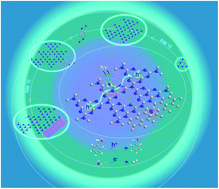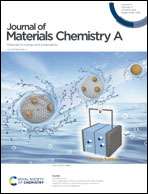General surface grafting strategy-derived carbon-modified graphitic carbon nitride with largely enhanced visible light photocatalytic H2 evolution coupled with benzyl alcohol oxidation†
Abstract
Carbon-modified g-C3N4 manifests increasing prospects in the photocatalytic realm. However, there are some challenges, such as difficult large-scale preparation, weak interface connection, limited active sites, and inefficient light utilization, which restrain the further utilization for carbon modified g-C3N4. To solve these disadvantages, we recommended a novel and general surface grafting strategy followed by the in situ carbonization treatment to obtain carbon-modified graphitic carbon nitride (CMCN). Experimental results disclose that the introduced carbon connected intimately with g-C3N4 by edge N atoms, which dramatically improve the charge transfer kinetics. CMCN presents incredibly reinforced visible light photocatalytic activity with an impressive hydrogen evolution rate of 5.549 mmol g−1 h−1, which is about 13.3 times higher than that of pure g-C3N4. Theoretical calculation results show that the introduced carbon can form a new intermediate state between the bandgap, which could capture the photoexcited electrons and reinforce the visible light absorption. Importantly, the practicality of the CMCN material is further demonstrated by replacing a sacrificial reagent with benzyl alcohol conversion to produce value-added benzaldehyde, where the decent evolution rates of 0.288 and 0.230 mmol g−1 h−1 can be achieved for H2 and benzaldehyde, respectively.



 Please wait while we load your content...
Please wait while we load your content...